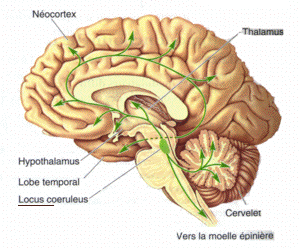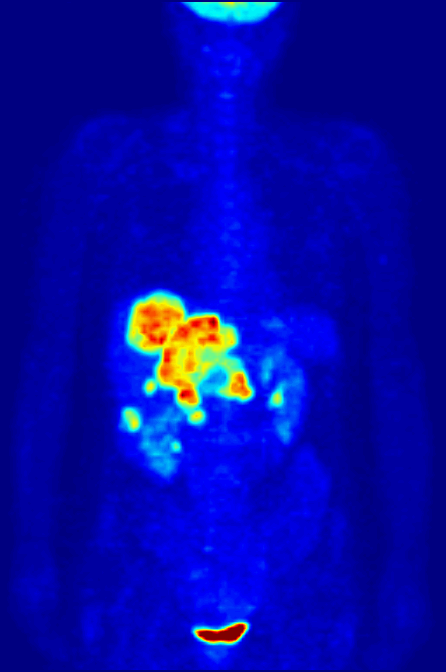|
Robert Y. Moore
Robert Y. Moore (born December 5, 1931) is an American neurologist with interests in disorders of biological rhythms, movement disorders, and behavioral neurology. He is credited with discovering the function of the suprachiasmatic nucleus (SCN) as the circadian clock, as well as, describing its organization. He is also credited with establishing the role of the mammalian retinohypothalamic tract (RHT) as a photic entrainment pathway. Moore cin 2017 serves as a professor of neurology, with a secondary in psychiatry and neuroscience at the University of Pittsburgh, and as co-director of the National Parkinson Foundation Center of Excellence at the University of Pittsburgh. Early life and education Robert Moore was born in Harvey, Illinois on December 5, 1931. At the age of 5, his family moved to Atlanta where Moore was forced to repeat Kindergarten after initially failing. The Moore family then moved to Detroit, Michigan where as a 2nd and 3rd grader, Moore developed a love of rea ... [...More Info...] [...Related Items...] OR: [Wikipedia] [Google] [Baidu] |
Biological Rhythms
Chronobiology is a field of biology that examines timing processes, including periodic (cyclic) phenomena in living organisms, such as their adaptation to solar- and lunar-related rhythms. These cycles are known as biological rhythms. Chronobiology comes from the ancient Greek χρόνος (''chrónos'', meaning "time"), and biology, which pertains to the study, or science, of life. The related terms ''chronomics'' and ''chronome'' have been used in some cases to describe either the molecular mechanisms involved in chronobiological phenomena or the more quantitative aspects of chronobiology, particularly where comparison of cycles between organisms is required. Chronobiological studies include but are not limited to comparative anatomy, physiology, genetics, molecular biology and behavior of organisms related to their biological rhythms. Other aspects include epigenetics, development, reproduction, ecology and evolution. The subject Chronobiology studies variations of the t ... [...More Info...] [...Related Items...] OR: [Wikipedia] [Google] [Baidu] |
Vasoactive Intestinal Polypeptide
Vasoactive intestinal peptide, also known as vasoactive intestinal polypeptide or VIP, is a peptide hormone that is vasoactive in the intestine. VIP is a peptide of 28 amino acid residues that belongs to a glucagon/secretin superfamily, the ligand of class II G protein–coupled receptors. VIP is produced in many tissues of vertebrates including the gut, pancreas, and suprachiasmatic nuclei of the hypothalamus in the brain. VIP stimulates contractility in the heart, causes vasodilation, increases glycogenolysis, lowers arterial blood pressure and relaxes the smooth muscle of trachea, stomach and gallbladder. In humans, the vasoactive intestinal peptide is encoded by the ''VIP'' gene. VIP has a half-life (t½) in the blood of about two minutes. Function In the body VIP has an effect on several tissues: In the digestive system, VIP seems to induce smooth muscle relaxation (lower esophageal sphincter, stomach, gallbladder), stimulate secretion of water into pancreatic juice ... [...More Info...] [...Related Items...] OR: [Wikipedia] [Google] [Baidu] |
Stony Brook University
Stony Brook University (SBU), officially the State University of New York at Stony Brook, is a public research university in Stony Brook, New York. Along with the University at Buffalo, it is one of the State University of New York system's two flagship institutions. Its campus consists of 213 buildings on over of land in Suffolk County and it is the largest public university (by area) in the state of New York. Opened in 1957 in Oyster Bay as the State University College on Long Island, the institution moved to Stony Brook in 1962. In 2001, Stony Brook was elected to the Association of American Universities, a selective group of major research universities in North America. It is also a member of the larger Universities Research Association. It is classified among "R1: Doctoral Universities – Very high research activity". Stony Brook University, in partnership with Battelle, manages Brookhaven National Laboratory, a national laboratory of the United States De ... [...More Info...] [...Related Items...] OR: [Wikipedia] [Google] [Baidu] |
Serotonin
Serotonin () or 5-hydroxytryptamine (5-HT) is a monoamine neurotransmitter. Its biological function is complex and multifaceted, modulating mood, cognition, reward, learning, memory, and numerous physiological processes such as vomiting and vasoconstriction. Approximately 90% of the serotonin that the body produces is in the intestinal tract. Biochemically, the indoleamine molecule derives from the amino acid tryptophan, via the (rate-limiting) Tryptophan hydroxylase, hydroxylation of the 5 position on the ring (forming the intermediate 5-Hydroxytryptophan, 5-hydroxytryptophan), and then Aromatic L-amino acid decarboxylase, decarboxylation to produce serotonin. Serotonin is primarily found in the enteric nervous system located in the human gastrointestinal tract, gastrointestinal tract (GI tract). However, it is also produced in the central nervous system (CNS), specifically in the raphe nuclei located in the brainstem, Merkel cells located in the skin, Neuroendocrine cell#Pulmo ... [...More Info...] [...Related Items...] OR: [Wikipedia] [Google] [Baidu] |
Pons
The pons (from Latin , "bridge") is part of the brainstem that in humans and other bipeds lies inferior to the midbrain, superior to the medulla oblongata and anterior to the cerebellum. The pons is also called the pons Varolii ("bridge of Varolius"), after the Italian anatomist and surgeon Costanzo Varolio (1543–75). This region of the brainstem includes neural pathways and tracts that conduct signals from the brain down to the cerebellum and medulla, and tracts that carry the sensory signals up into the thalamus.Saladin Kenneth S.(2007) Anatomy & physiology the unity of form and function. Dubuque, IA: McGraw-Hill Structure The pons is in the brainstem situated between the midbrain and the medulla oblongata, and in front of the cerebellum. A separating groove between the pons and the medulla is the inferior pontine sulcus. The superior pontine sulcus separates the pons from the midbrain. The pons can be broadly divided into two parts: the basilar part of the pons ( ... [...More Info...] [...Related Items...] OR: [Wikipedia] [Google] [Baidu] |
Locus Coeruleus
The locus coeruleus () (LC), also spelled locus caeruleus or locus ceruleus, is a nucleus in the pons of the brainstem involved with physiological responses to stress and panic. It is a part of the reticular activating system. The locus coeruleus, which in Latin means "blue spot", is the principal site for brain synthesis of norepinephrine (noradrenaline). The locus coeruleus and the areas of the body affected by the norepinephrine it produces are described collectively as the locus coeruleus-noradrenergic system or LC-NA system. Norepinephrine may also be released directly into the blood from the adrenal medulla. Anatomy The locus coeruleus (LC) is located in the posterior area of the rostral pons in the lateral floor of the fourth ventricle. It is composed of mostly medium-size neurons. Melanin granules inside the neurons of the LC contribute to its blue colour. Thus, it is also known as the nucleus pigmentosus pontis, meaning "heavily pigmented nucleus of the pons." ... [...More Info...] [...Related Items...] OR: [Wikipedia] [Google] [Baidu] |
Positron Emission Tomography
Positron emission tomography (PET) is a functional imaging technique that uses radioactive substances known as radiotracers to visualize and measure changes in metabolic processes, and in other physiological activities including blood flow, regional chemical composition, and absorption. Different tracers are used for various imaging purposes, depending on the target process within the body. For example: * Fluorodeoxyglucose ( 18F">sup>18FDG or FDG) is commonly used to detect cancer; * 18Fodium fluoride">sup>18Fodium fluoride (Na18F) is widely used for detecting bone formation; * Oxygen-15 (15O) is sometimes used to measure blood flow. PET is a common imaging technique, a medical scintillography technique used in nuclear medicine. A radiopharmaceutical – a radioisotope attached to a drug – is injected into the body as a radioactive tracer, tracer. When the radiopharmaceutical undergoes beta plus decay, a positron is emitted, and when the positron interacts with an or ... [...More Info...] [...Related Items...] OR: [Wikipedia] [Google] [Baidu] |
Parkinson's Disease
Parkinson's disease (PD), or simply Parkinson's, is a long-term degenerative disorder of the central nervous system that mainly affects the motor system. The symptoms usually emerge slowly, and as the disease worsens, non-motor symptoms become more common. The most obvious early symptoms are tremor, rigidity, slowness of movement, and difficulty with walking. Cognitive and behavioral problems may also occur with Depression (mood), depression, anxiety, and apathy occurring in many people with PD. Parkinson's disease dementia becomes common in the advanced stages of the disease. Those with Parkinson's can also have problems with their sleep and sensory systems. The motor symptoms of the disease result from the death of cells in the substantia nigra, a region of the midbrain, leading to a dopamine deficit. The cause of this cell death is poorly understood, but involves the build-up of protein, misfolded proteins into Lewy bodies in the neurons. Collectively, the main motor sym ... [...More Info...] [...Related Items...] OR: [Wikipedia] [Google] [Baidu] |
Discovery Of Suprachiasmatic Nucleus As The Master Circadian Clock
Discovery may refer to: * Discovery (observation), observing or finding something unknown * Discovery (fiction), a character's learning something unknown * Discovery (law), a process in courts of law relating to evidence Discovery, The Discovery or Discoveries may also refer to: Film and television * ''The Discovery'' (film), a 2017 British-American romantic science fiction film * Discovery Channel, an American TV channel owned by Warner Bros. Discovery * ''Discovery'' (Canadian TV series), a 1962–1963 Canadian documentary television program * ''Discovery'' (Irish TV series), an Irish documentary television programme * ''Discovery'' (UK TV programme), a British documentary television programme * ''Discovery'' (U.S. TV series), a 1962–1971 American television news program * '' Star Trek: Discovery'', an American television series ** USS ''Discovery'' (NCC-1031), a fictional space craft on ''Star Trek: Discovery'' Literature * ''The Discovery'' (Frances Sheridan pla ... [...More Info...] [...Related Items...] OR: [Wikipedia] [Google] [Baidu] |
Retinal Ganglion Cell
A retinal ganglion cell (RGC) is a type of neuron located near the inner surface (the ganglion cell layer) of the retina of the eye. It receives visual information from photoreceptors via two intermediate neuron types: bipolar cells and retina amacrine cells. Retina amacrine cells, particularly narrow field cells, are important for creating functional subunits within the ganglion cell layer and making it so that ganglion cells can observe a small dot moving a small distance. Retinal ganglion cells collectively transmit image-forming and non-image forming visual information from the retina in the form of action potential to several regions in the thalamus, hypothalamus, and mesencephalon, or midbrain. Retinal ganglion cells vary significantly in terms of their size, connections, and responses to visual stimulation but they all share the defining property of having a long axon that extends into the brain. These axons form the optic nerve, optic chiasm, and optic tract. ... [...More Info...] [...Related Items...] OR: [Wikipedia] [Google] [Baidu] |
Autoradiograph
An autoradiograph is an image on an X-ray film or nuclear emulsion produced by the pattern of decay emissions (e.g., beta particles or gamma rays) from a distribution of a radioactive substance. Alternatively, the autoradiograph is also available as a digital image (digital autoradiography), due to the recent development of scintillation gas detectors or rare earth phosphorimaging systems. The film or emulsion is apposed to the labeled tissue section to obtain the autoradiograph (also called an autoradiogram). The ''auto-'' prefix indicates that the radioactive substance is within the sample, as distinguished from the case of historadiography or microradiography, in which the sample is marked using an external source. Some autoradiographs can be examined microscopically for localization of silver grains (such as on the interiors or exteriors of cells or organelles) in which the process is termed micro-autoradiography. For example, micro-autoradiography was used to examine whether ... [...More Info...] [...Related Items...] OR: [Wikipedia] [Google] [Baidu] |







